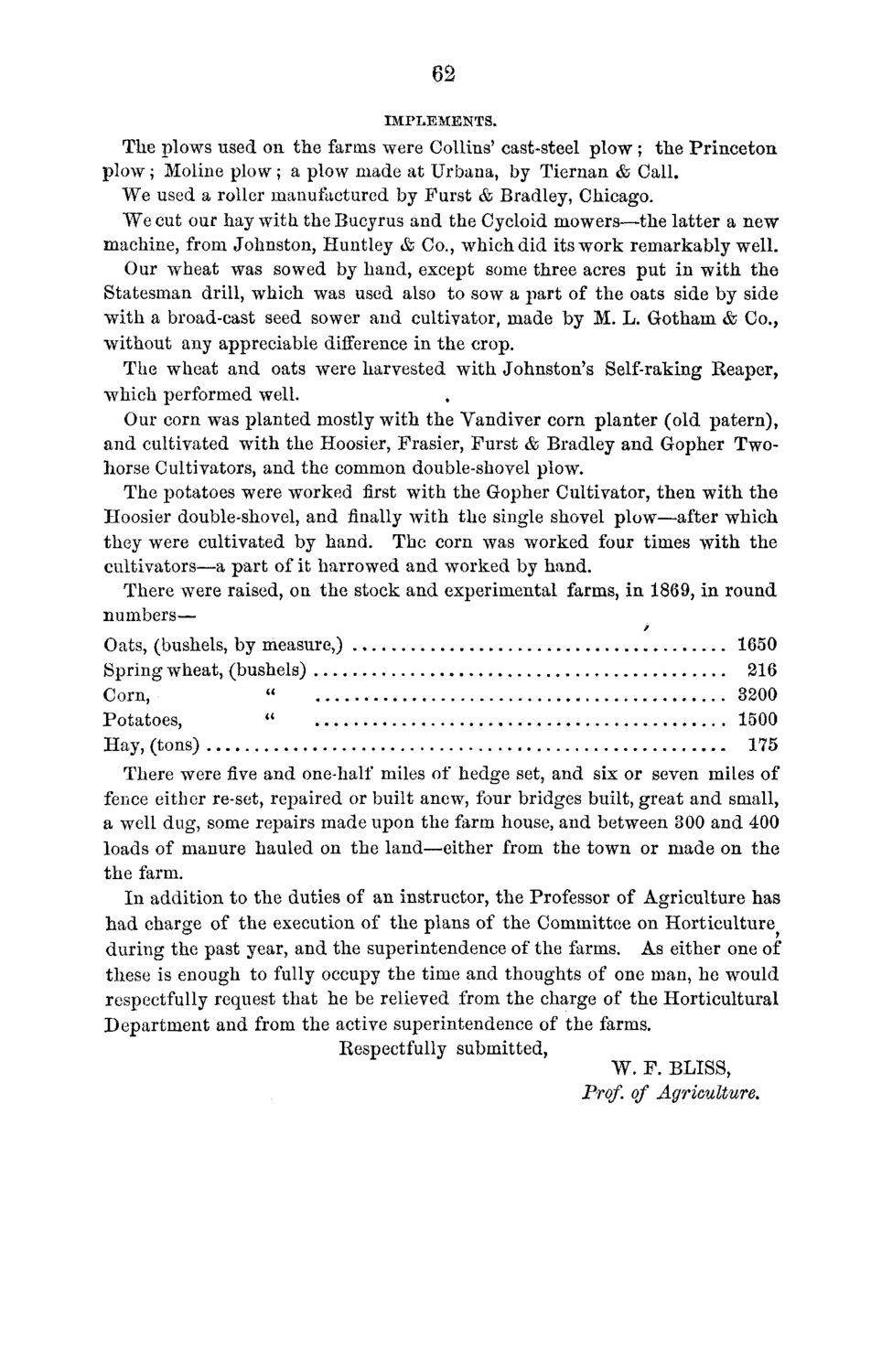| |
| |
Caption: Board of Trustees Minutes - 1870
This is a reduced-resolution page image for fast online browsing.

EXTRACTED TEXT FROM PAGE:
62 IMPLEMENTS. The plows used on t h e farms were Collins' cast-steel plow ; t h e P r i n c e t o n p l o w ; Moline p l o w ; a plow made at Urbana, by Tiernan & Call. We used a roller manufactured by Furst & Bradley, Chicago. We cut our hay with the Bucyrus and the Cycloid mowers—the latter a new machine, from Johnston, Huntley & Co., which did its work remarkably well. Our wheat was sowed by hand, except some three acres put in with the Statesman drill, which was used also to sow a part of t h e oats side by side w i t h a broad-cast seed sower and cultivator, made by M. L. Gotham & Co., without any appreciable difference in the crop. The wheat and oats wrere harvested with Johnston's Self-raking Reaper, which performed well. Our corn was planted mostly with the Yandiver corn planter (old patera), and cultivated with the Hoosier, Frasier, Furst & Bradley and Gopher Twohorse Cultivators, and the common double-shovel plow. The potatoes were worked first with the Gopher Cultivator, then w i t h t h e Hoosier double-shovel, and finally with t h e single shovel plow—after which they were cultivated by hand. The corn was worked four times with the cultivators—a p a r t of it harrowed and worked by hand. There were raised, on the stock and experimental farms, in 1869, in round numbers— Oats, (bushels, by measure,) Spring wheat, (bushels) Corn, " Potatoes, " Hay, (tons) 1650 216 3200 1500 175 There were five and one-half miles of hedge set, and six or seven miles of fence either re-set, repaired or built anew, four bridges built, great and small, a well dug, some repairs made upon the farm house, and between 300 and 400 loads of manure hauled on the land—either from the town or made on t h e t h e farm. I n addition to the duties of an instructor, the Professor of Agriculture has had charge of t h e execution of the plans of the Committee on Horticulture during the past year, and the superintendence of the farms. As either one of these is enough to fully occupy the time and thoughts of one man, he would respectfully request that he be relieved from the charge of the Horticultural Department and from the active superintendence of the farms. Respectfully submitted, W . F . BLISS, Prof, of Agriculture.
| |